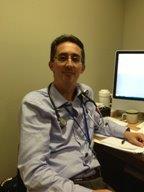Central Auckland > Public Hospital Services > Health New Zealand | Te Whatu Ora - Te Toka Tumai Auckland >
Respiratory Services | Auckland | Te Toka Tumai
Public Service, Respiratory
Description
Consultants
-

Dr Sonia Cherian
Respiratory Physician
-

Dr Eun Ho Choe
Respiratory Physician
-

Dr Timothy Christmas
Respiratory Physician
-

Dr Sally de Boer
Respiratory Physician
-

Dr Sandra Hotu
Respiratory Physician
-

Dr Syed Hussain
Respiratory Physician
-

Dr Clair King
Respiratory Physician
-

Dr Chris Lewis
Respiratory Physician and Director of Prevocational Training
-

Dr Tanya McWilliams
Respiratory Physician
-

Dr Mark O'Carroll
Respiratory Physician
-

Dr Sasiharan Sithamparanathan
Respiratory Physician
-

Dr Margaret Wilsher
Respiratory Physician
Referral Expectations
You need to bring to your appointment:
1. Any letters or reports from your doctor or another hospital.
2. Any X-rays, CT (computer tomgraphy) or MRI (magnetic resonance imaging) films and reports.
3. All medicines you are currently taking, including herbal and natural remedies.
4. Your pharmaceutical entitlement card.
Procedures / Treatments
Asthma symptoms include coughing, wheezing, a tight feeling in the chest and trouble breathing. Asthma occurs when the main breathing tubes of your lungs are over-sensitive and react to things that don’t affect other people. As a result of this they become swollen and narrow. If your asthma is not getting better with standard treatment (preventor and reliever inhalers) or if you are having more asthma attacks than you or your doctor are comfortable with, you may be referred to a specialist. In most cases you’ll be asked to give a complete medical history and will also be examined by the doctor. Sometimes other conditions can appear like asthma or complicate asthma, so you may be asked to have some tests to help in the diagnosis. Tests looking for severity and complicating features of asthma include: chest X-ray, spirometry and CT chest. For more details see below. You may, however, not need any of these tests. Treatment This includes taking medicines as well as changing some lifestyle factors. A peak flow meter can be used to keep a watch on your asthma and help with plans to prevent attacks. Stopping smoking is very important as is learning to recognise what brings an asthma attack on. Asthma is treated with inhaled medicines. There are two types: 1. a preventor medicine is taken every day. It soothes the irritated breathing tubes and prevents worsening of asthma, “asthma attacks”. 2. a reliever treats the asthma attacks. It relaxes the tightened muscles around the breathing tubes. For more information on asthma see www.asthmanz.co.nz
Asthma symptoms include coughing, wheezing, a tight feeling in the chest and trouble breathing. Asthma occurs when the main breathing tubes of your lungs are over-sensitive and react to things that don’t affect other people. As a result of this they become swollen and narrow. If your asthma is not getting better with standard treatment (preventor and reliever inhalers) or if you are having more asthma attacks than you or your doctor are comfortable with, you may be referred to a specialist. In most cases you’ll be asked to give a complete medical history and will also be examined by the doctor. Sometimes other conditions can appear like asthma or complicate asthma, so you may be asked to have some tests to help in the diagnosis. Tests looking for severity and complicating features of asthma include: chest X-ray, spirometry and CT chest. For more details see below. You may, however, not need any of these tests. Treatment This includes taking medicines as well as changing some lifestyle factors. A peak flow meter can be used to keep a watch on your asthma and help with plans to prevent attacks. Stopping smoking is very important as is learning to recognise what brings an asthma attack on. Asthma is treated with inhaled medicines. There are two types: 1. a preventor medicine is taken every day. It soothes the irritated breathing tubes and prevents worsening of asthma, “asthma attacks”. 2. a reliever treats the asthma attacks. It relaxes the tightened muscles around the breathing tubes. For more information on asthma see www.asthmanz.co.nz
This term is used to describe lung disease where the breathing tubes become blocked and the surrounding tissue and air sacs inside the lungs become damaged. COPD includes conditions such as emphysema, chronic bronchitis and chronic asthma. COPD is a long term and sometimes fatal disease that can be managed and slowed down. Smoking is the main cause of emphysema and chronic bronchitis. Chronic bronchitis is an inflammation of the main breathing tubes (bronchi) in the lungs, which results in the production of excess mucous (phlegm) and a reduction in the amount of airflow in and out of the lungs. In the early stages of chronic bronchitis, a cough usually occurs in the morning. As the disease progresses, coughing persists throughout the day. There is often associated shortness of breath and an increased rate of chest infections. Emphysema is the gradual destruction of the air sacs (alveoli) in the lungs. The alveoli are unable to completely relax. As they become larger they are not as good at transporting oxygen to the blood. Emphysema cannot be cured, but can be managed through medication and lifestyle changes. Investigations You may have some of the following tests before or after your clinic appointment: chest X-ray spirometry lung function tests CT chest The specialist will decide if you need any of these tests, depending on your symptoms and examination findings. Treatment There are ways to manage COPD. The first and most important is to stop smoking if this applies to you. There are exercises and dietary changes that can help maintain and improve fitness. Medications include inhalers, although they are not used for everyone. If you have COPD it is a good idea to have the flu vaccination every year. Please click on the following link for information about the Auckland DHB Pulmonary Rehabilitation Service COPD Nurse Specialists Available Monday to Thursday and every alternate Friday 8:00am - 4:30pm (excluding public holidays). The COPD Nurse Specialist offers specialised assessment and education regarding COPD management, care coordination and patient self management. This may be provided in hospital as an inpatient and/or in the COPD Clinic, Respiratory Services GCC. For people with confirmed COPD (by Spirometry) you can refer to COPD Nurse Specialist clinic for advice on management. The GP will refer you to the Respiratory Department requesting an appointment in the outpatient clinic. GPs - please use the CareConnect eReferral system to do so. The Nurse Specialist also provides case management (telehealth) across the hospital/community interface for identified "at risk" patients who would benefit from support in improving self management and coordinated care. The Nurse Specialist works closely with GPs and other community and hospital healthcare providers. COPD Nurse Specialists Leanne Rhodes Ph: 021 894 781 or (09) 307 4949 extn 29121 Email: LeanneR@adhb.govt.nz For non urgent enquiries, please leave a voicemail message on (or send a text to) 021 894 781. For urgent queries regarding COPD patient management for patients who are unwell please contact On Call Respiratory Registrar at Auckland City Hospital. Phone 021 518 205. For more information on COPD see www.asthmanz.co.nz
This term is used to describe lung disease where the breathing tubes become blocked and the surrounding tissue and air sacs inside the lungs become damaged. COPD includes conditions such as emphysema, chronic bronchitis and chronic asthma. COPD is a long term and sometimes fatal disease that can be managed and slowed down. Smoking is the main cause of emphysema and chronic bronchitis. Chronic bronchitis is an inflammation of the main breathing tubes (bronchi) in the lungs, which results in the production of excess mucous (phlegm) and a reduction in the amount of airflow in and out of the lungs. In the early stages of chronic bronchitis, a cough usually occurs in the morning. As the disease progresses, coughing persists throughout the day. There is often associated shortness of breath and an increased rate of chest infections. Emphysema is the gradual destruction of the air sacs (alveoli) in the lungs. The alveoli are unable to completely relax. As they become larger they are not as good at transporting oxygen to the blood. Emphysema cannot be cured, but can be managed through medication and lifestyle changes. Investigations You may have some of the following tests before or after your clinic appointment: chest X-ray spirometry lung function tests CT chest The specialist will decide if you need any of these tests, depending on your symptoms and examination findings. Treatment There are ways to manage COPD. The first and most important is to stop smoking if this applies to you. There are exercises and dietary changes that can help maintain and improve fitness. Medications include inhalers, although they are not used for everyone. If you have COPD it is a good idea to have the flu vaccination every year. Please click on the following link for information about the Auckland DHB Pulmonary Rehabilitation Service COPD Nurse Specialists Available Monday to Thursday and every alternate Friday 8:00am - 4:30pm (excluding public holidays). The COPD Nurse Specialist offers specialised assessment and education regarding COPD management, care coordination and patient self management. This may be provided in hospital as an inpatient and/or in the COPD Clinic, Respiratory Services GCC. For people with confirmed COPD (by Spirometry) you can refer to COPD Nurse Specialist clinic for advice on management. The GP will refer you to the Respiratory Department requesting an appointment in the outpatient clinic. GPs - please use the CareConnect eReferral system to do so. The Nurse Specialist also provides case management (telehealth) across the hospital/community interface for identified "at risk" patients who would benefit from support in improving self management and coordinated care. The Nurse Specialist works closely with GPs and other community and hospital healthcare providers. COPD Nurse Specialists Leanne Rhodes Ph: 021 894 781 or (09) 307 4949 extn 29121 Email: LeanneR@adhb.govt.nz For non urgent enquiries, please leave a voicemail message on (or send a text to) 021 894 781. For urgent queries regarding COPD patient management for patients who are unwell please contact On Call Respiratory Registrar at Auckland City Hospital. Phone 021 518 205. For more information on COPD see www.asthmanz.co.nz
This term is used to describe lung disease where the breathing tubes become blocked and the surrounding tissue and air sacs inside the lungs become damaged. COPD includes conditions such as emphysema, chronic bronchitis and chronic asthma. COPD is a long term and sometimes fatal disease that can be managed and slowed down. Smoking is the main cause of emphysema and chronic bronchitis.
Chronic bronchitis is an inflammation of the main breathing tubes (bronchi) in the lungs, which results in the production of excess mucous (phlegm) and a reduction in the amount of airflow in and out of the lungs. In the early stages of chronic bronchitis, a cough usually occurs in the morning. As the disease progresses, coughing persists throughout the day. There is often associated shortness of breath and an increased rate of chest infections.
Emphysema is the gradual destruction of the air sacs (alveoli) in the lungs. The alveoli are unable to completely relax. As they become larger they are not as good at transporting oxygen to the blood. Emphysema cannot be cured, but can be managed through medication and lifestyle changes.
Investigations
You may have some of the following tests before or after your clinic appointment:
- chest X-ray
- spirometry
- lung function tests
- CT chest
The specialist will decide if you need any of these tests, depending on your symptoms and examination findings.
Treatment
There are ways to manage COPD. The first and most important is to stop smoking if this applies to you. There are exercises and dietary changes that can help maintain and improve fitness. Medications include inhalers, although they are not used for everyone. If you have COPD it is a good idea to have the flu vaccination every year.
Please click on the following link for information about the Auckland DHB Pulmonary Rehabilitation Service
COPD Nurse Specialists
Available Monday to Thursday and every alternate Friday 8:00am - 4:30pm (excluding public holidays).
The COPD Nurse Specialist offers specialised assessment and education regarding COPD management, care coordination and patient self management. This may be provided in hospital as an inpatient and/or in the COPD Clinic, Respiratory Services GCC. For people with confirmed COPD (by Spirometry) you can refer to COPD Nurse Specialist clinic for advice on management. The GP will refer you to the Respiratory Department requesting an appointment in the outpatient clinic. GPs - please use the CareConnect eReferral system to do so.
The Nurse Specialist also provides case management (telehealth) across the hospital/community interface for identified "at risk" patients who would benefit from support in improving self management and coordinated care. The Nurse Specialist works closely with GPs and other community and hospital healthcare providers.
COPD Nurse Specialists
Leanne Rhodes
Ph: 021 894 781 or (09) 307 4949 extn 29121
Email: LeanneR@adhb.govt.nz
For non urgent enquiries, please leave a voicemail message on (or send a text to) 021 894 781. For urgent queries regarding COPD patient management for patients who are unwell please contact On Call Respiratory Registrar at Auckland City Hospital. Phone 021 518 205.
For more information on COPD see www.asthmanz.co.nz
This is when abnormal malignant cells divide and grow in an uncontrolled fashion in the lung tissue. The effect of this is to destroy normal lung tissue and block off the breathing tubes. There are several types of lung cancer. The most common cause is cigarette smoke; however exposure to asbestos, marijuana smoke and a number of other chemicals can also increase your risk of developing cancer. Common signs and symptoms a cough that gets worse with time coughing up blood chest pain loss of appetite and weight tiredness repeated doses of, or not improving, bronchitis or pneumonia. Diagnosis To diagnose lung cancer your doctor will look at your medical and smoking history. You will also have a physical examination. This is usually followed by a number of tests. The aim of the tests is to confirm the diagnosis and find out what type of cancer it is which usually involves obtaining some cells to look at under the microscope. Tests you are likely to have include: chest X-ray. This is the first test that may raise the question of a lung cancer. It is usually followed by other tests to confirm the diagnosis CT scans with or without fine needle aspirate (see below) bronchoscopy (see below). Treatment Once lung cancer is diagnosed, a process known as staging determines the extent of the disease. Knowing the type and stage of cancer means the doctor can plan your treatment. Different treatment options include: surgery. The type of surgery depends on the size and type of cancer radiotherapy is a form of high energy radiation (X-ray) that kills cancer cells chemotherapy is the use of drugs aimed at killing cancer cells. The aim of treatment is to keep the person as well as possible even if the cancer cannot be cured. If you have a lung cancer there will be ongoing follow up with specialists and nurses throughout treatment and afterwards. For more information about lung cancer see www.cancernz.org.nz
This is when abnormal malignant cells divide and grow in an uncontrolled fashion in the lung tissue. The effect of this is to destroy normal lung tissue and block off the breathing tubes. There are several types of lung cancer. The most common cause is cigarette smoke; however exposure to asbestos, marijuana smoke and a number of other chemicals can also increase your risk of developing cancer. Common signs and symptoms a cough that gets worse with time coughing up blood chest pain loss of appetite and weight tiredness repeated doses of, or not improving, bronchitis or pneumonia. Diagnosis To diagnose lung cancer your doctor will look at your medical and smoking history. You will also have a physical examination. This is usually followed by a number of tests. The aim of the tests is to confirm the diagnosis and find out what type of cancer it is which usually involves obtaining some cells to look at under the microscope. Tests you are likely to have include: chest X-ray. This is the first test that may raise the question of a lung cancer. It is usually followed by other tests to confirm the diagnosis CT scans with or without fine needle aspirate (see below) bronchoscopy (see below). Treatment Once lung cancer is diagnosed, a process known as staging determines the extent of the disease. Knowing the type and stage of cancer means the doctor can plan your treatment. Different treatment options include: surgery. The type of surgery depends on the size and type of cancer radiotherapy is a form of high energy radiation (X-ray) that kills cancer cells chemotherapy is the use of drugs aimed at killing cancer cells. The aim of treatment is to keep the person as well as possible even if the cancer cannot be cured. If you have a lung cancer there will be ongoing follow up with specialists and nurses throughout treatment and afterwards. For more information about lung cancer see www.cancernz.org.nz
- a cough that gets worse with time
- coughing up blood
- chest pain
- loss of appetite and weight
- tiredness
- repeated doses of, or not improving, bronchitis or pneumonia.
- chest X-ray. This is the first test that may raise the question of a lung cancer. It is usually followed by other tests to confirm the diagnosis
- CT scans with or without fine needle aspirate (see below)
- bronchoscopy (see below).
- surgery. The type of surgery depends on the size and type of cancer
- radiotherapy is a form of high energy radiation (X-ray) that kills cancer cells
- chemotherapy is the use of drugs aimed at killing cancer cells.
You may be advised to take lung function tests to find out how much air moves in and out as you breathe. The two most common tools used to measure lung function are spirometers and peak flow meters. Lung function tests are usually done before and after taking a medication known as a bronchodilator (asthma reliever medication) to open your airways.
You may be advised to take lung function tests to find out how much air moves in and out as you breathe. The two most common tools used to measure lung function are spirometers and peak flow meters. Lung function tests are usually done before and after taking a medication known as a bronchodilator (asthma reliever medication) to open your airways.
Spirometry is a test which measures the speed at which your lungs can be filled and emptied of air. It can be used to diagnose problems of breathing and monitor the usefulness of treatment. In order to do spirometry, you take a deep breath in and blow out as hard as you can into a hollow tube attached to a spirometer machine for 6 seconds. You will be asked to do the test 3 times. The whole process takes 10 – 15 minutes depending on whether or not you are given some inhaled medicine and asked to do it again to monitor if there is an improvement.
Spirometry is a test which measures the speed at which your lungs can be filled and emptied of air. It can be used to diagnose problems of breathing and monitor the usefulness of treatment. In order to do spirometry, you take a deep breath in and blow out as hard as you can into a hollow tube attached to a spirometer machine for 6 seconds. You will be asked to do the test 3 times. The whole process takes 10 – 15 minutes depending on whether or not you are given some inhaled medicine and asked to do it again to monitor if there is an improvement.
This is a small hand-held tube that can measure what is happening in your breathing tubes. You can have one at home and measure your peak flow by blowing into it as hard and fast as possible. You will be shown how to measure it and compare it with what you can blow when you are well as part of your asthma management plan if you think you are having an asthma attack.
This is a small hand-held tube that can measure what is happening in your breathing tubes. You can have one at home and measure your peak flow by blowing into it as hard and fast as possible. You will be shown how to measure it and compare it with what you can blow when you are well as part of your asthma management plan if you think you are having an asthma attack.
This is similar to a blood test but instead of a needle going into a vein it is inserted briefly into a small artery in your wrist. A small amount of blood is taken and sent to the laboratory for information about the oxygenation of your blood and other gases. Blood gas measurements may also be used if you have known respiratory, metabolic or kidney disease, especially if you have severe difficulty breathing. Many conditions can cause a blood gas imbalance and while the blood gas tests do not identify the exact cause of the imbalance they will point to either a respiratory or metabolic problem.
This is similar to a blood test but instead of a needle going into a vein it is inserted briefly into a small artery in your wrist. A small amount of blood is taken and sent to the laboratory for information about the oxygenation of your blood and other gases. Blood gas measurements may also be used if you have known respiratory, metabolic or kidney disease, especially if you have severe difficulty breathing. Many conditions can cause a blood gas imbalance and while the blood gas tests do not identify the exact cause of the imbalance they will point to either a respiratory or metabolic problem.
A chest X-ray is normally undertaken to check the chest wall, lungs and heart. A chest X-ray is often the first test used to determine the reason for shortness of breath, persistent cough, chest pain or injury. Although you may think of an X-ray as a picture of bones, a trained observer can also see air spaces, like the lungs (which look black) and fluid (which looks white). Women should always advise their doctor if they are or think they may be pregnant before an X-ray is undertaken. When having a chest X-ray you are exposed to a very small amount of radiation. What to expect? You will have all metal objects removed from your body. You will be asked to remain still in a specific position and hold your breath on command. There are staff present, but they will not necessarily remain in the room, but will speak with you via an intercom system and will be viewing the procedure constantly through a windowed control room.
A chest X-ray is normally undertaken to check the chest wall, lungs and heart. A chest X-ray is often the first test used to determine the reason for shortness of breath, persistent cough, chest pain or injury. Although you may think of an X-ray as a picture of bones, a trained observer can also see air spaces, like the lungs (which look black) and fluid (which looks white). Women should always advise their doctor if they are or think they may be pregnant before an X-ray is undertaken. When having a chest X-ray you are exposed to a very small amount of radiation. What to expect? You will have all metal objects removed from your body. You will be asked to remain still in a specific position and hold your breath on command. There are staff present, but they will not necessarily remain in the room, but will speak with you via an intercom system and will be viewing the procedure constantly through a windowed control room.
With CT you can see much more detail than with a normal X-ray. Using an X-ray beam, which is sent through the body from different angles, creates a CT image and by using a complicated mathematical process a computer is able to produce an image. This allows cross-sectional images of the body without cutting it open. The CT is used to view all body structures but especially soft tissue such as body organs (heart, lungs, liver etc.). What to expect? You will have all metal objects removed from your body. You will lie down on a narrow padded moveable table that will be slid into the scanner, through a circular opening. You will feel nothing while the scan is in progress, but some people can feel slightly claustrophobic or closed in, whilst inside the scanner. You will be asked to remain still and hold your breath on command. There are staff present, but they will not necessarily remain in the room, but will speak with you via an intercom system and will be viewing the procedure constantly through a windowed control room, from where they will run the scanner. Some procedures will require Contrast medium. Contrast medium is a substance that makes the image of the CT clearer. Contrast medium can be given by mouth, or by injection into the bloodstream. The scan time will vary depending on the type of examination required, but as a rule it will take around 30 minutes.
With CT you can see much more detail than with a normal X-ray. Using an X-ray beam, which is sent through the body from different angles, creates a CT image and by using a complicated mathematical process a computer is able to produce an image. This allows cross-sectional images of the body without cutting it open. The CT is used to view all body structures but especially soft tissue such as body organs (heart, lungs, liver etc.). What to expect? You will have all metal objects removed from your body. You will lie down on a narrow padded moveable table that will be slid into the scanner, through a circular opening. You will feel nothing while the scan is in progress, but some people can feel slightly claustrophobic or closed in, whilst inside the scanner. You will be asked to remain still and hold your breath on command. There are staff present, but they will not necessarily remain in the room, but will speak with you via an intercom system and will be viewing the procedure constantly through a windowed control room, from where they will run the scanner. Some procedures will require Contrast medium. Contrast medium is a substance that makes the image of the CT clearer. Contrast medium can be given by mouth, or by injection into the bloodstream. The scan time will vary depending on the type of examination required, but as a rule it will take around 30 minutes.
Depending on what is seen on the CT scan an additional test can be done where a fine needle is inserted into your chest into the cancer and some cells sucked up into the needle. This is done while taking pictures with the CT scanner to guide the doctor as to where to place the needle. Local anaesthetic is put into your skin and muscles so that the test is not overly painful. A specialist doctor does this.
Depending on what is seen on the CT scan an additional test can be done where a fine needle is inserted into your chest into the cancer and some cells sucked up into the needle. This is done while taking pictures with the CT scanner to guide the doctor as to where to place the needle. Local anaesthetic is put into your skin and muscles so that the test is not overly painful. A specialist doctor does this.
During this test a thin fibreoptic tube is inserted into your breathing tubes, through the nose, to view the tubes. A biopsy (small sample of tissue) may be taken to help the doctor make a diagnosis. It is usually undertaken under local anaesthetic. You may be given medicine to make you sleepy and relaxed. A specialist doctor does this procedure in an operating theatre environment.
During this test a thin fibreoptic tube is inserted into your breathing tubes, through the nose, to view the tubes. A biopsy (small sample of tissue) may be taken to help the doctor make a diagnosis. It is usually undertaken under local anaesthetic. You may be given medicine to make you sleepy and relaxed. A specialist doctor does this procedure in an operating theatre environment.
What is Sleep Apnoea? While sleeping, all our muscles relax (go floppy and loose). This includes our throat muscles. In some people the throat muscles can relax enough to cause the throat to get sucked shut above the voice box. During sleep this blockage (an obstruction) is what stops our breathing (an apnoea). This disease is called obstructive sleep apnoea. Please click here for further information on sleep apnoea. If you think you may have sleep apnoea please see your GP. A full management protocol is available for your GP to use to help assess your problem and decide if you need referring to the Scoring Rules, Terminology & Technical Specifications used by our service: Our sleep service utilises Terminology & Technical Specifications recommended in 2012 by the American Academy of Sleep Medicine (AASM). Multiple Sleep Latency Testing (MSLT) and Maintenance of Wakefulness Testing (MWT) adheres to AASM Practice Parameters published by the AASM Standards of Practice Committee in 2005. For further detail please contact the Charge Sleep Physiologist at Auckland City Hosptial. Introducing ADHBSleep Patient Info Sheet (PDF, 503.9 KB) Brief information for patients being referred to ADHBSleep Healthy Sleep Hygiene & Drowsy Driver Tips (PDF, 382.9 KB) Patient information sheets Sleepiness & Driving Patient Info Sheet (PDF, 239.2 KB) Covers recommendations and NZTA aspects of driver licensing for patients with excessive sleepiness, OSA, and CPAP therapy Snoring Patient Info Sheet (PDF, 736.9 KB) Brief advice for simple snorers not suitable for referral to ADHB Sleep Service Insomnia Patient Info Sheet (PDF, 204.9 KB) Brief advice for insomnia, produced by American Thoracic Society Shiftwork Patient Info Sheet (PDF, 77.7 KB) Brief advice for shiftworkers, produced by Sleep Health Foundation Replacing CPAP Machines and Parts - Patient Info Sheet (PDF, 304.7 KB) Guidelines for patients under the care of ADHBSleep requiring machine repair or consumable replacement Restless Legs Info Sheet (PDF, 233.8 KB) Brief advice for Restless Leg Syndrome, produced by American Thoracic Society Referring to ADHBSleep? (PDF, 354.9 KB) Please read this information before referring your patient to ADHBSleep.
What is Sleep Apnoea? While sleeping, all our muscles relax (go floppy and loose). This includes our throat muscles. In some people the throat muscles can relax enough to cause the throat to get sucked shut above the voice box. During sleep this blockage (an obstruction) is what stops our breathing (an apnoea). This disease is called obstructive sleep apnoea. Please click here for further information on sleep apnoea. If you think you may have sleep apnoea please see your GP. A full management protocol is available for your GP to use to help assess your problem and decide if you need referring to the Scoring Rules, Terminology & Technical Specifications used by our service: Our sleep service utilises Terminology & Technical Specifications recommended in 2012 by the American Academy of Sleep Medicine (AASM). Multiple Sleep Latency Testing (MSLT) and Maintenance of Wakefulness Testing (MWT) adheres to AASM Practice Parameters published by the AASM Standards of Practice Committee in 2005. For further detail please contact the Charge Sleep Physiologist at Auckland City Hosptial. Introducing ADHBSleep Patient Info Sheet (PDF, 503.9 KB) Brief information for patients being referred to ADHBSleep Healthy Sleep Hygiene & Drowsy Driver Tips (PDF, 382.9 KB) Patient information sheets Sleepiness & Driving Patient Info Sheet (PDF, 239.2 KB) Covers recommendations and NZTA aspects of driver licensing for patients with excessive sleepiness, OSA, and CPAP therapy Snoring Patient Info Sheet (PDF, 736.9 KB) Brief advice for simple snorers not suitable for referral to ADHB Sleep Service Insomnia Patient Info Sheet (PDF, 204.9 KB) Brief advice for insomnia, produced by American Thoracic Society Shiftwork Patient Info Sheet (PDF, 77.7 KB) Brief advice for shiftworkers, produced by Sleep Health Foundation Replacing CPAP Machines and Parts - Patient Info Sheet (PDF, 304.7 KB) Guidelines for patients under the care of ADHBSleep requiring machine repair or consumable replacement Restless Legs Info Sheet (PDF, 233.8 KB) Brief advice for Restless Leg Syndrome, produced by American Thoracic Society Referring to ADHBSleep? (PDF, 354.9 KB) Please read this information before referring your patient to ADHBSleep.
-
Introducing ADHBSleep Patient Info Sheet
(PDF, 503.9 KB)
Brief information for patients being referred to ADHBSleep
-
Healthy Sleep Hygiene & Drowsy Driver Tips
(PDF, 382.9 KB)
Patient information sheets
-
Sleepiness & Driving Patient Info Sheet
(PDF, 239.2 KB)
Covers recommendations and NZTA aspects of driver licensing for patients with excessive sleepiness, OSA, and CPAP therapy
-
Snoring Patient Info Sheet
(PDF, 736.9 KB)
Brief advice for simple snorers not suitable for referral to ADHB Sleep Service
-
Insomnia Patient Info Sheet
(PDF, 204.9 KB)
Brief advice for insomnia, produced by American Thoracic Society
-
Shiftwork Patient Info Sheet
(PDF, 77.7 KB)
Brief advice for shiftworkers, produced by Sleep Health Foundation
-
Replacing CPAP Machines and Parts - Patient Info Sheet
(PDF, 304.7 KB)
Guidelines for patients under the care of ADHBSleep requiring machine repair or consumable replacement
-
Restless Legs Info Sheet
(PDF, 233.8 KB)
Brief advice for Restless Leg Syndrome, produced by American Thoracic Society
-
Referring to ADHBSleep?
(PDF, 354.9 KB)
Please read this information before referring your patient to ADHBSleep.
Document Downloads
-
Introducing ADHBSleep Patient Info Sheet
(PDF, 503.9 KB)
Brief information for patients being referred to ADHBSleep
-
ADHBSleep OSA Patient Information Booklet
(PDF, 2.2 MB)
Comprehensive patient information about OSA and ADHBSleep.
-
Healthy Sleep Hygiene & Drowsy Driver Tips
(PDF, 382.9 KB)
Patient Information Sheets
-
Sleepiness & Driving Patient Info Sheet
(PDF, 239.2 KB)
Covers recommendations and NZTA aspects of driver licensing for patients with excessive sleepiness, OSA, and CPAP therapy
-
Snoring Patient Info Sheet
(PDF, 902.7 KB)
Brief advice for simple snorers not suitable for referral to ADHB Sleep Service
-
Insomnia Patient Info Sheet
(PDF, 204.9 KB)
Brief advice for insomnia, produced by American Thoracic Society
-
Shiftwork Patient Info Sheet
(PDF, 77.7 KB)
Brief advice for shiftworkers, produced by Sleep Health Foundation
-
Replacing CPAP machines and parts - Patient Info Sheet
(PDF, 304.7 KB)
Guidelines for patients under the care of ADHBSleep requiring machine repair or consumable replacement
-
Restless Legs Info Sheet
(PDF, 233.8 KB)
Brief information for Restless Legs Syndrome, produced by American Thoracic Society
-
Referring to ADHBSleep?
(PDF, 354.9 KB)
Please ready this handy guide before considering referring patients to ADHBSleep
Website
Contact Details
Greenlane Clinical Centre
Central Auckland
Website
General enquiries
(09) 367 0000
Extension/pager number known
(09) 307 4949
Patient enquiries
(09) 375 4300
Outpatient appointments and surgical bookings
(09) 638 0400 / scheduling@adhb.govt.nz
GP/ External Specialist Help Desk
(09) 307 2800
Mental Health Services 24 Hour Crisis helpline
0800 800 717
214 Green Lane West
One Tree Hill
Auckland 1051
Street Address
214 Green Lane West
One Tree Hill
Auckland 1051
Postal Address
Private Bag 92 189
Auckland Mail Centre
Auckland 1142
Was this page helpful?
This page was last updated at 10:31AM on December 4, 2024. This information is reviewed and edited by Respiratory Services | Auckland | Te Toka Tumai.

